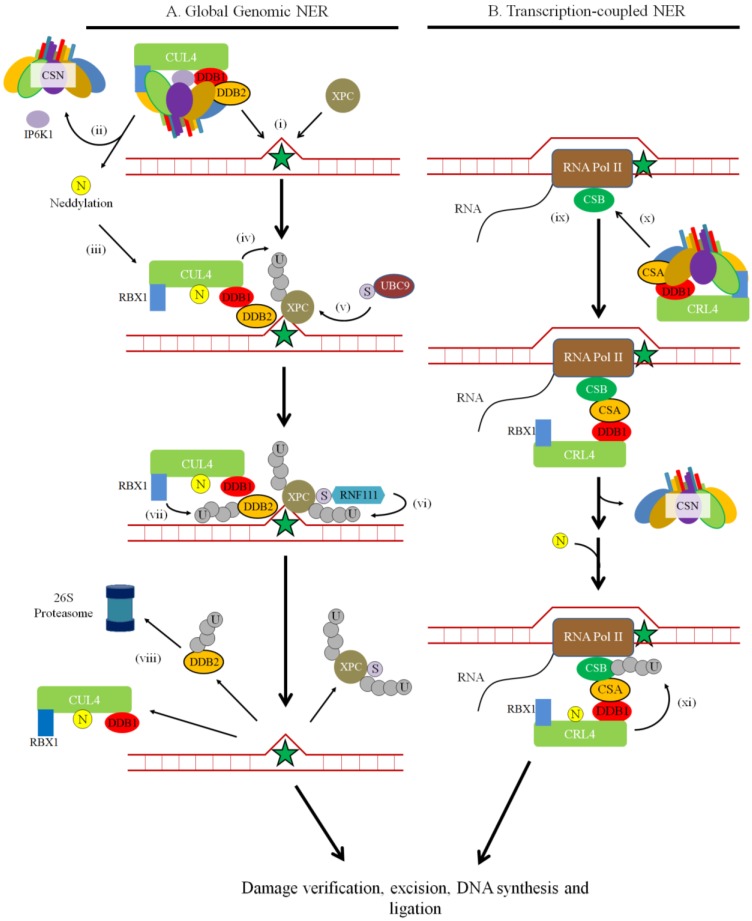Figure 7.
The Role of the CSN and Neddylation in the Initial Steps of NER. Cells use nucleotide excision repair to remove bulky lesions on DNA. (A) In GG-NER, XPC-RAD23 or DDB1-DDB2 recognizes the lesions (indicated by the star) (i). The CSN dissociates from CRL4 with the assistance of IP6K1 (ii), which is thought to promote NEDD8 (N) conjugation and CRL4 activation (iii). DDB1-DDB2 forms a complex with CUL4 and RBX1 to ubiquitylate XPC, which recruit repair proteins involved in subsequent steps in GG-NER (iv). XPC is SUMOylated by UBC9 (v), which promote ubiquitylation at Lys63 by RNF111 (vi) and dissociation from the DNA. Additionally, CRL4-DDB1 ubiquitylates DDB2 (vii) to promote its degradation by the 26S proteasome (viii). (B) In TC-NER, CSB associates to the stalled RNA Polymerase II (RNA Pol II) (ix). Through CSA, CRL4 is recruited to CSB (x). Following CSN dissociation and neddylation, CRL4CSA possibly ubiquitylates CSB (xi). Both the GG-NER and TC-NER repair pathways then proceed with damage verification, damaged nucleotide excision, DNA synthesis, and ligation. U = Ubiquitin. S = SUMO protein.

